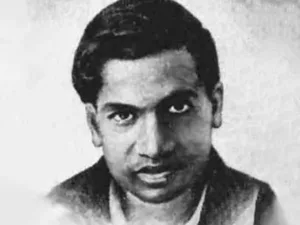
Dear Patriots,
In the world of mathematics, there are few figures as revered and enigmatic as Srinivasa Ramanujan. Born on December 22, 1887, in Erode, Tamil Nadu, India, Ramanujan’s journey from humble beginnings to becoming one of the greatest mathematical minds of the 20th century is nothing short of extraordinary.
Early Life and Education
Ramanujan’s love for numbers began at an early age. Growing up in a modest household, his innate talent for mathematics became evident as he quickly mastered advanced mathematical concepts without any formal training. His family recognized his exceptional abilities and encouraged his pursuit of knowledge, despite facing financial hardships.
Despite his brilliance, Ramanujan’s formal education was limited. He attended local schools in Kumbakonam and later enrolled at the Government Arts College in Kumbakonam. However, due to his focus on mathematics and neglect of other subjects, he failed to complete his college education. Undeterred by academic setbacks, Ramanujan continued to pursue mathematics independently, devouring books and making remarkable discoveries on his own.
Mathematical Discoveries
Ramanujan’s breakthroughs in mathematics were nothing short of groundbreaking. His work spanned various branches of the field, including number theory, infinite series, and modular forms. One of his most notable contributions was in the realm of partition theory, where he developed revolutionary methods for analyzing the distribution of integers into sums of smaller integers.
Among Ramanujan’s most celebrated discoveries is the Ramanujan prime, a special type of prime number with unique properties. He also made significant contributions to the study of mock theta functions, elliptic functions, and continued fractions, leaving mathematicians in awe of his intuitive insights and profound understanding of mathematical structures.
Collaboration with G. H. Hardy
Ramanujan’s talents eventually caught the attention of British mathematician G. H. Hardy, who recognized the young Indian’s extraordinary potential. In 1913, Ramanujan wrote a letter to Hardy, enclosing a collection of his theorems and formulas. Impressed by the depth and originality of Ramanujan’s work, Hardy invited him to Cambridge University, where they began a fruitful collaboration that would leave an indelible mark on the history of mathematics.
Challenges and Achievements
Ramanujan’s time in England was filled with challenges. He faced cultural and racial prejudices, as well as struggles with his health and poverty. However, his dedication to mathematics remained unwavering, and he continued to produce groundbreaking work despite adversity.
In 1918, Ramanujan was elected a Fellow of the Royal Society, a prestigious honor that cemented his reputation as one of the world’s leading mathematicians. He also became the first Indian to be elected a Fellow of Trinity College, Cambridge. Despite his untimely death at the age of 32 in 1920, Ramanujan’s legacy continues to inspire generations of mathematicians around the world.
Legacy
Srinivasa Ramanujan’s legacy is far beyond his mathematical achievements. He embodied the spirit of curiosity, perseverance, and imagination that defines the pursuit of knowledge. His story serves as a reminder that brilliance knows no boundaries and that even the most humble beginnings can give rise to greatness.
Today, Ramanujan’s work remains an integral part of mathematical research, with scholars continuing to explore the implications of his discoveries. His name is synonymous with genius, and his contributions to mathematics have earned him a place among the greatest minds in history.
In conclusion, Srinivasa Ramanujan’s life and work exemplify the power of passion and determination in the face of adversity. His story is a testament to the transformative potential of human ingenuity and serves as an enduring inspiration to all who dare to dream and explore the mysteries of the universe.
This blog post offers a glimpse into the remarkable life and achievements of Srinivasa Ramanujan, presenting his story in a simple, easy-to-read format while celebrating his contributions to the world of mathematics.
Disclaimer: This blog post is generated using artificial-intelligence tools.

Leave A Comment